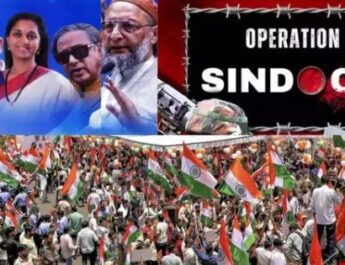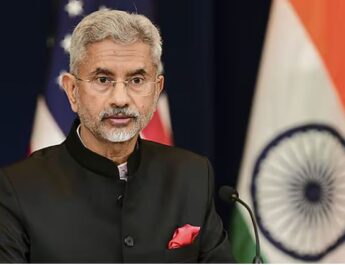Admission and Education: the Gruelling path to Residency
Indian resident doctors are the backbone of the public healthcare system, shouldering the enormous responsibility of providing care to millions. Despite their critical role, these doctors face numerous challenges related to their education, living conditions, work environment, and personal safety. The recent incident in Calcutta, where a resident doctor was brutally assaulted and murdered, highlights the urgency of addressing these issues. This article delves into the various challenges faced by resident doctors and suggests reforms that are crucial for their well-being and the overall improvement of the healthcare system.
A. Admission and Education: the Gruelling path to Residency
The journey to becoming a resident doctor in India is both competitive and mentally exhausting. After completing an MBBS degree, graduates must clear the NEET-PG exam, a hurdle made even more daunting by the limited number of seats available in government medical colleges. The intense pressure to secure a seat often leads candidates to spend years in preparation, during which time the emotional and psychological toll can be severe.
Once admitted, the challenges only escalate. The academic curriculum in Indian medical schools is known for its intensity, with a strong focus on theoretical knowledge. However, the transition from theory to practice is often abrupt, leaving many resident doctors feeling unprepared for the real-world challenges they encounter during clinical rotations. The hands-on training, although invaluable, is demanding, and the lack of adequate supervision in many hospitals places additional responsibility on young doctors who are still honing their skills.
B. Living Conditions: The Struggle for Basic Dignity
The living conditions of resident doctors in hospitals are often substandard, reflecting a broader neglect of healthcare workers’ welfare. Many doctors are housed in shabby hostels, where overcrowding is the norm. These accommodations are poorly maintained, with issues such as leaking roofs, lack of clean drinking water, and inadequate sanitation facilities being common complaints. The lack of a comfortable and hygienic living environment contributes significantly to the overall stress and fatigue experienced by resident doctors, affecting their ability to rest and recover during their limited downtime.
C. Duty Hours and Workload: The Burden of Endless Shifts
The work schedule of a resident doctor in a government hospital is gruelling, to say the least. With hospitals often understaffed and patient loads overwhelming, resident doctors are expected to shoulder the bulk of clinical work. It is not uncommon for them to work 80-100 hours per week, with 24-36 hour shifts being a routine occurrence. Despite regulations set by the Medical Council of India (MCI) that limit work hours to a maximum of 48 per week, these are often ignored due to the acute shortage of medical staff in government hospitals.
The pressure to manage high patient volumes, especially in emergency departments, can be overwhelming, leading to a cycle of chronic fatigue and burnout. According to a 2021 survey by the Indian Medical Association (IMA), over 66% of resident doctors reported experiencing burnout, anxiety, and depression due to long working hours and lack of support. The suicide rate among Indian doctors is alarmingly high, being two to five times higher than that of the general population, as highlighted by a study published in the Indian Journal of Psychiatry.
The patient-to-doctor ratio in India is alarming, with one government doctor catering to an average of 11,082 people, compared to the WHO-recommended ratio of 1:1,000. Resident doctors often bear the brunt of this shortage, handling an overwhelming number of patients daily. The excessive workload also hampers their ability to continue their studies and professional development, making it difficult to balance their responsibilities as both learners and caregivers.
D. Working Conditions: Battling Against the Odds
The working conditions in government hospitals are often a reflection of the larger challenges of the Indian healthcare system, which is chronically underfunded and overstretched. Resident doctors are required to work in environments where basic medical equipment and supplies are often in short supply. They may have to improvise or make do with outdated tools, which can be frustrating and potentially dangerous for both doctors and patients.
Security is another significant concern. There have been numerous instances of resident doctors being assaulted by patients’ relatives, frustrated by the lack of immediate care or poor outcomes. Despite repeated demands for better security measures, many government hospitals still lack adequate protection for their staff, creating an environment of fear and insecurity that adds to the mental and emotional strain on resident doctors.
E. Lack of Automation: Struggling with Manual Processes
One of the significant challenges that Indian resident doctors face is the lack of automation in public hospitals. In many advanced countries, healthcare systems have embraced technology to streamline administrative tasks, manage patient data, and assist in diagnostics. However, in India, most of these processes remain manual, adding to the workload of already overburdened doctors.
Resident doctors often spend a considerable amount of time on clerical tasks, such as filling out paperwork, manually entering patient data, and processing laboratory results. The lack of adequate digital infrastructure in many government hospitals means that resident doctors must perform these tasks themselves, which takes away valuable time that could be spent on patient care.
F. Security and Safety: A Growing Concern
The lack of adequate security in hospitals has become a significant issue in recent years, with numerous reports of resident doctors being assaulted by frustrated patients or their relatives. These incidents are often fuelled by long waiting times, lack of facilities, or adverse outcomes, for which the doctors are unfairly blamed. The absence of sufficient security personnel in many hospitals leaves doctors vulnerable to such attacks.
In response to these threats, there have been widespread protests and strikes by resident doctors demanding better security measures. However, despite assurances from authorities, the implementation of these measures has been inconsistent, leaving many doctors to work in an environment of fear and uncertainty.
G. Mental Health and Well-being: The Silent Crisis
The mental health of resident doctors is a growing concern that is often overlooked. The combination of an intense workload, poor living conditions, and constant stress creates a perfect storm for mental health issues such as anxiety, depression, and burnout. However, the stigma associated with mental illness in the medical profession often prevents doctors from seeking help. Many fear that admitting to mental health struggles could be seen as a sign of weakness or could negatively impact their careers.
The lack of institutional support for mental health is also glaring. While some hospitals have started offering counselling services, these are often underutilized due to the stigma and the overwhelming workload that leaves little time for self-care. The result is a silent crisis where many doctors are struggling internally, with few avenues for relief or support.
H. Financial Strain: The Cost of Serving the Public
Despite their critical role in the healthcare system, resident doctors in hospitals are often inadequately compensated. While stipends vary depending on the state and institution, they are generally low, especially when compared to the workload and responsibilities shouldered by these doctors. This financial strain is exacerbated by the need to often purchase their own medical supplies, books, and food, further stretching their limited resources.
For many doctors who come from lower or middle-income backgrounds, the financial pressure can be immense. They are expected to support themselves and, in some cases, their families, on a stipend that barely covers basic living expenses. This economic hardship adds another layer of stress to an already demanding profession.
I. Call for Urgent Reforms:
To improve the conditions of resident doctors in government hospitals, the Indian government needs to implement a comprehensive set of reforms that address the root causes of the challenges these doctors face. Here are some key areas where reforms are necessary:
- Regulate Duty Hours and Workload: Strictly enforce existing regulations that limit the working hours of resident doctors. Increase staffing levels to distribute the workload more evenly and reduce the burden on resident doctors.
- Improve Living Conditions: Upgrade housing facilities for resident doctors, provide housing allowances, and ensure regular maintenance to prevent deterioration and ensure a healthy living environment.
- Enhance Security and Safety: Strengthen security measures in all government hospitals, enact stricter laws that provide legal protection to healthcare workers, and conduct public awareness campaigns to educate patients and their families about the challenges doctors face.
- Provide Mental Health Support: Establish counselling services, promote work-life balance, and launch initiatives to reduce the stigma associated with seeking mental health support within the medical community.
- Increase Financial Compensation: Review and increase the stipends paid to resident doctors, provide additional benefits such as health insurance, retirement savings plans, and allowances for night shifts and overtime.
- Improve Working Conditions: Invest in the modernization of hospital infrastructure, ensure that hospitals are adequately stocked with medical supplies, and increase the number of administrative and nursing staff to reduce the non-clinical burden on doctors.
- Promote Automation and Technology: Implement Electronic Health Records (EHR), invest in healthcare IT, and develop automated systems for diagnostics, treatment planning, and patient monitoring to enhance efficiency and reduce errors.
- Increase Investment in Healthcare: Boost the overall healthcare budget, encourage public-private partnerships to improve healthcare infrastructure and services in government hospitals, and prioritize the development of healthcare facilities in rural and underserved areas.
- Policy and Regulatory Reforms: Establish a national framework that sets minimum standards for residency programs across all states, create channels for resident doctors to provide anonymous feedback on their working conditions and training programs, and appoint an independent healthcare ombudsman to address grievances and complaints from resident doctors.
Note: Article is written by Dr. Durgesh Sharma. He is an academician and international consultant with over 30 years of extensive experience collaborating with prestigious national and international institutions. His expertise spans across key areas such as Sustainable Development, SME and Skill Development, and Information Technology, all aimed at fostering a better future. In addition to his academic and consulting roles, Dr. Sharma is advisor to four successful start-ups in India and one in Sweden.Dr. Sharma has made significant contributions to education, positively impacting the lives of over 1,500 engineering graduates by enhancing their knowledge and guiding over 6,000 students in skill development, thereby enabling them to secure livelihoods both in India and abroad. His scholarly contributions include authoring three books and publishing 59 research papers on a wide range of topics.




